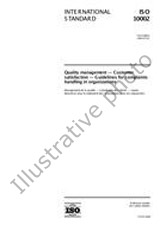We need your consent to use the individual data so that you can see information about your interests, among other things. Click "OK" to give your consent.

ISO/IEC 9796-2-ed.3.0
Information technology - Security techniques - Digital signature schemes giving message recovery - Part 2: Integer factorization based mechanisms
Translate name
STANDARD published on 15.12.2010
The information about the standard:
Designation standards: ISO/IEC 9796-2-ed.3.0
Publication date standards: 15.12.2010
SKU: NS-943075
The number of pages: 54
Approximate weight : 162 g (0.36 lbs)
Country: International technical standard
Category: Technical standards ISO
The category - similar standards:
Annotation of standard text ISO/IEC 9796-2-ed.3.0 :
ISO/IEC 9796-2:2010 specifies three digital signature schemes giving message recovery, two of which are deterministic (non-randomized) and one of which is randomized. The security of all three schemes is based on the difficulty of factorizing large numbers. All three schemes can provide either total or partial message recovery. ISO/IEC 9796-2:2010 specifies the method for key production for the three signature schemes. However, techniques for key management and for random number generation (as required for the randomized signature scheme), are outside the scope of ISO/IEC 9796-2:2010. The first mechanism specified in ISO/IEC 9796-2:2010 is only applicable for existing implementations, and is retained for reasons of backward compatibility.


 Cookies
Cookies
